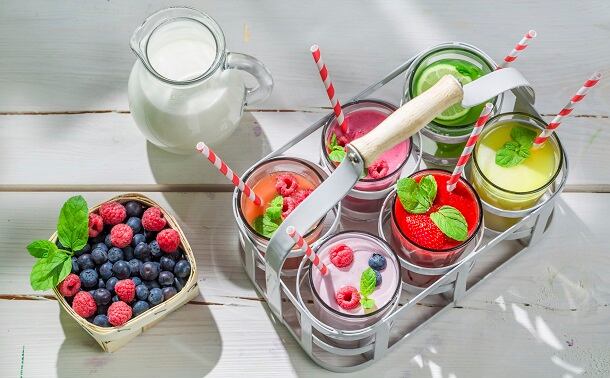Launched in late August, JPA’s Sip Smarter campaign and website “cover everything from how juice is made to health, nutrition, sustainability, food safety and also topics around which there is a lot of consumer confusion, such as natural sugars versus added sugars and the different types of juice varieties,” said Diane Welland, nutrition communications manager for JPA.
She said many of the changes and talking points in the campaign and website were developed based on consumer research conducted by JPA over the past few years.
“What we found is there really is a lot of confusion out there about juice, and we wanted to put together this new website so that it would really be education-oriented and present the facts in once place where consumers could go to answer some of their questions about juice,” said Welland.
She explained that one of the most common questions revealed in the consumer research is that “consumers really don’t know the difference between natural sugars and added sugars, and how those relate to juice, and they don’t know the difference between juice beverages or juice drinks and 100% juice.”
While the call out for added sugar on the new Nutrition Facts panel could help consumers better see when sugars are natural versus added, Welland says many Americans are still confused about the difference and don’t understand all the different names for sugar in the ingredient list.
By breaking down the difference between 100% juice and other juices as well as natural and added sugars, Welland says the website aims to empower consumers to understand what products are nutritious even though they have sugar.
On that note, the website also talks about the overall nutrition of different types of juices, including vitamins, minerals and “things like bioactives and plant compounds that are found naturally in juice and give them their unique colors, flavors and smells,” Welland said, adding, “Sometimes I think people forget that there is a lot of good things in juice.”
The consumer research also revealed confusion around how much juice parents should give to their children or that can be consumed as part of a healthy diet – both of which the website addresses, Welland said.
“We follow the American Academy of Pediatrics guidelines for juice, and this is on our website so people can more easily figure out how much juice they can serve to their children,” she said.
“We also talk about the dietary guidelines for Americans and how juice can fit into a healthy diet,” she added. “For example, the dietary guidelines say that 100% juice is one of the beverages, which should be consumed or could be consumed” in addition to water and low-fat milk.
The website makes a point to cite trusted, science-backed sources, such as the dietary guidelines and guidance published by health care provider organizations, she added.
Countering common misconceptions
The website also uses science to bust several commonly held myths about juice, Welland said.
For example, she notes, in the ‘Get The Facts’ section of website, the group addresses “the common misunderstanding that consuming 100% fruit juice instead of whole fruit significantly impacts someone’s fiber consumption.”
She explained: “The majority of the fiber we get in the typical US diet actually doesn’t come from fruits and vegetables. It actually comes from whole grains and beans and legumes and those types of foods. We do get some fiber from fruits and vegetables, obviously, but when you talk about fiber you really need to look at the total diet.”
She also noted that research shows that juice drinkers compared to non-juice drinkers have healthier diets overall and are more likely to follow dietary guideline recommendations. This extends to children, which research shows tend to eat more whole fruits if they also drink juice.
“So, you really have to take that all in context as the total diet,” she said.
Another related myth addressed on the website is the idea that people use juice to replace fruit consumption, when in reality Welland said most people eat two parts fruit to one part juice – illustrating that juice can complement whole fruit intake.
A splash of fun
While the website and campaign do heavy lifting around nutrition and healthy habits, it also has creative elements and a modern design that will make it more engaging for today’s consumers, Welland said.
This includes “lifestyle tips and recipes that you can make with juice,” which will be promoted beyond the website on other social media platforms, such as Instagram, added company spokeswoman Anna Sczepanski.
She said, “We are looking to engage with different influencers, such as bloggers and registered dietitians, to share ideas for how consumers can incorporate more fruits and vegetables in their diets with the help of juice.”
She noted that the new website and campaign also will be promoted through the organization’s monthly newsletter, digital advertising and at conferences and events throughout the year.

